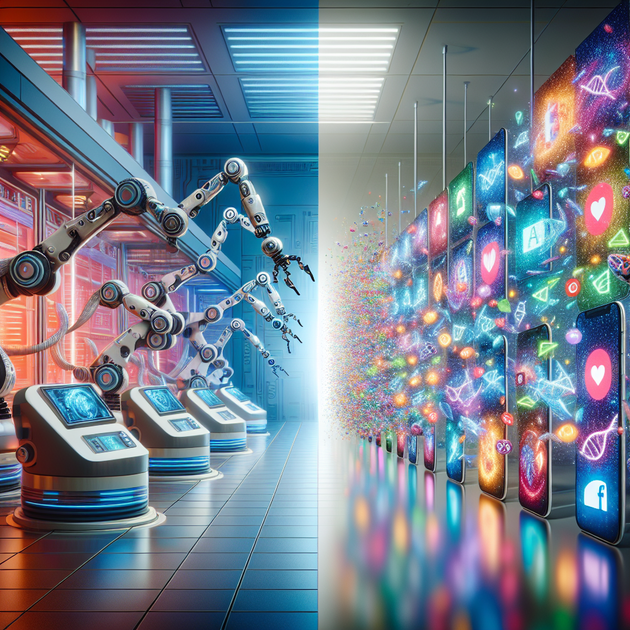Have you ever noticed how some of the biggest promises in tech seem to shrink over time? One day a company like OpenAI is talking about curing cancer. The next thing you know, they’re rolling out something called the “Infinite TikTok AI Slop Machine.” How did we get here—and what does it say about where technology is really headed?
From Lofty Promises to Viral Loops
Let’s rewind for a moment. When OpenAI burst onto the scene, their mission felt almost heroic. Cure cancer! Solve climate change! Make human life better in ways we could only dream of. And honestly? Who wouldn’t root for that kind of ambition?
Fast forward a bit and this week’s news is… less inspiring. Instead of medical breakthroughs or world-saving inventions, we’re looking at an “Infinite TikTok AI Slop Machine.” In plain English? An algorithm designed to churn out endless streams of addictive content—think social media on turbo mode.
Sound familiar? That’s because it is. There’s a pattern in Silicon Valley that goes something like this:
- Start with sky-high goals (save the world!)
- Build cool technology
- Realize there’s more money in attention than solutions
- Pivot toward products that keep us glued to our screens
OpenAI isn’t the first startup to take this path—and probably won’t be the last.
The Startup Incentive Trap
If you’ve spent any time following Bay Area startups (or even just watched a few episodes of Silicon Valley), you’ll recognize this trajectory. Ambitions start off huge and noble. But staying afloat (and keeping investors happy) means chasing whatever gets clicks and cash.
Here’s why that happens:
- Attention pays. Social media algorithms drive engagement—and revenue.
- Bigger audiences mean bigger data. More data means better (and more profitable) AI models.
- Solving real problems is hard. Making viral content is much easier and more lucrative, at least in the short term.
It’s not that companies like OpenAI don’t care about big issues anymore—it’s just that incentives push them toward easier wins.
An Anecdote from Tech History
Let me tell you about my friend Sam who worked at a well-known health tech startup a few years ago. When he joined, he was promised a shot at helping eradicate diabetes with advanced algorithms and patient monitoring tools.
Fast forward eighteen months—the company had shifted focus almost entirely to building an app that nudged users into buying health supplements and fitness subscriptions via push notifications. The original mission was still painted on their office wall—but nobody talked about it anymore.
Sam quit soon after. “We went from curing diseases,” he told me over coffee one day, “to optimizing click rates.”
Sound familiar?
The Real-World Impact: More Scrolling, Less Healing?
So what does all this mean for us—everyday folks just trying to make sense of these breakthroughs?
On one hand, there’s no denying how powerful these new algorithms can be. The same technology behind viral video feeds could theoretically help scientists sift through mountains of medical data or predict cancer risks better than any human doctor.
But when those talents are pointed at keeping us scrolling (rather than healing), we have to ask—what are we missing out on? Are we trading away real progress for endless distraction?
A few things worth considering:
- The mental health costs of infinite scrolling are real.
- The opportunity costs—what else could these minds build if not for profit pressures?
- The feedback loop—every hour spent doomscrolling funds more addictive content creation.
Where Do We Go From Here?
It’s easy to feel cynical watching yet another tech company pivot from world-saving dreams to viral content machines. But maybe there’s still hope if enough people keep pushing for responsible innovation—and hold these companies accountable for their choices.
So here’s my question for you: If you were running OpenAI (or any hotshot startup), would you stick with big ambitions—even if they’re slower and harder—or chase quick wins that pay off today? Drop your thoughts below!

Leave a Reply